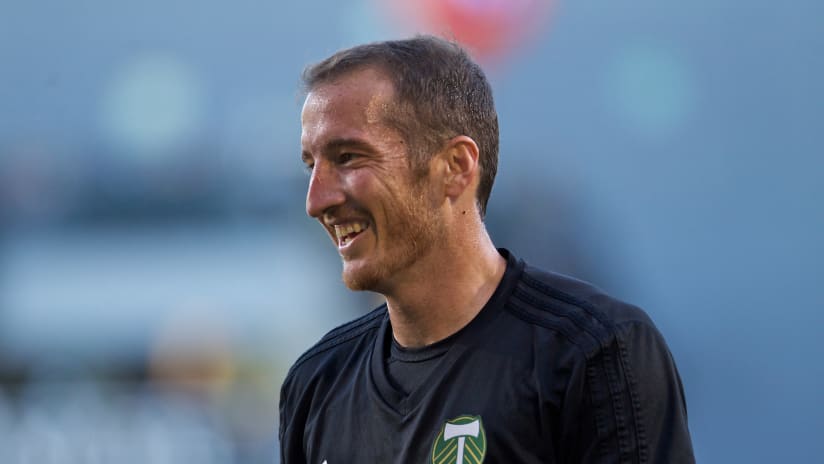When the Portland Timbers acquired Jeff Attinella just over 21 months ago, few remembered the lofty status he had accumulated during his career in college. Nobody thought about the promise with which Real Salt Lake brought him to Utah in 2011, and few saw that, after six professional seasons, he might be ready for more than a backup goalkeeper’s role.
Attinella, however, had known for some time that he was ready to start. It’s the role he originally saw himself on track for eight years ago, as he finished his college career – one he quickly learned, as a 22-year-old, he’d need more time to grow into. Two years ago, though, Attinella felt his time as an apprentice needed to end, and it was time for him to claim the time he’d always worked for.
This is Jeff Attinella’s path to that time, a circuitous route that took him from Tampa to the Rocky Mountains, to Cascadia via a Minnesota moment. It’s one that finds him now, in the prime of his career, finally entrenched as an MLS starter – one that, two weeks ago, he outlined for Timbers.com in this, Jeff Attinella’s Guide to Becoming an MLS No. 1:
1. Get cut by an MLS team
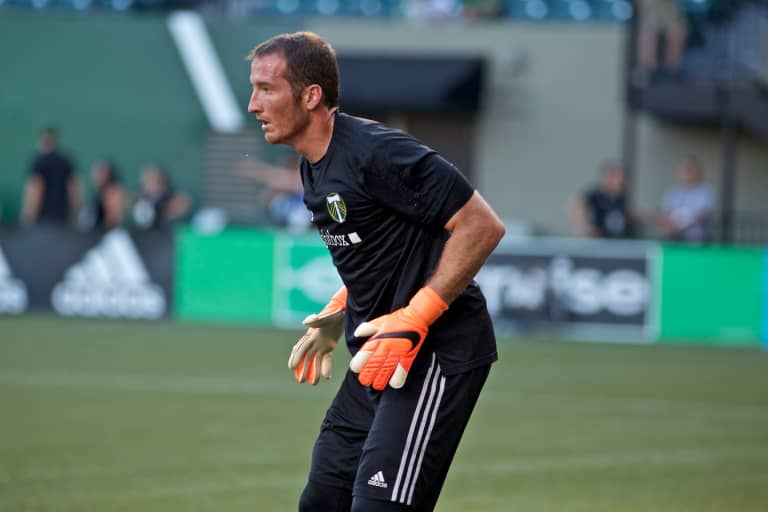
Attinella had recently finished a standout career at the University of South Florida in Tampa when, in January 2011, he was drafted by RSL. Just over a month later, he had been cut by RSL and signed back close to home, with the North American Soccer League’s Tampa Bay Rowdies.
“That,” being cut by Salt Lake, “was, by far, the best thing that could have possibly happened to me,” he remembers. “Because when I got there, I was an All-American in college, and I felt a pretty big chip on my shoulder. I didn’t go until the Supplemental Draft,” leaving him the 50th player selected through 2011’s various rounds. “All those mock drafts had me going in the first round, so I thought I was good, you know?
“To be called in the Supplemental Draft, to get picked up by Salt Lake, and when I got there, they were preparing for Champions League,” with a team which – led by Javier Morales, Kyle Beckerman, Álvaro Saborío, Jamison Olave, Nat Borchers and Nick Rimando – finished one goal away from CONCACAF’s crown. Along with players like Tony Beltran, Chris Wingert, Fabián Espindola, Will Johnson and Ned Grabavoy, the group formed perhaps the most formidable core in MLS history.
Even in goal, Real Salt Lake was stacked. Rimando, an MLS legend, was at his full powers and ensconced as the team’s number one. Kyle Reynish had established himself as a reliable backup and was only five years removed from a collegiate title at the University of California, Santa Barbara. Even Tim Melia, who would go on to win an MLS Goalkeeper of the Year award later, at Sporting Kansas City, was fighting for traction on a loaded RSL roster.
“I roomed with Tim, which, for me, was great,” Attinella says, somewhat ironically in the face of two current MLS No. 1s being lodged so deep on one team’s depth chart. “He was going through it. He was a guy that played in the lower leagues; or, at least, he was loaned there, for a while. And he was telling me about his path, and obviously, we’ve taken similar ones. To room with him for three weeks and to get his brain, to build a relationship with him was great, as well.”
Melia would go out on loan again, that year, and to Chivas USA the next, unable to claim a spot on the depth chart from either Rimando and Reynish. For the young Attinella, a level that Melia, three years older, couldn’t crack proved too much.
“They weren’t messing around, that year …,” Attinella recalls. “I knew within two weeks that I wasn’t going to stick around. On my own, I asked them to be honest with me, and sped up the process,” and, eventually, left the team.
“When it happened, it was just devastating, because you think your dreams are over before they even get started. But for me, that was the best thing that could have happened.”
2. Go home and thrive
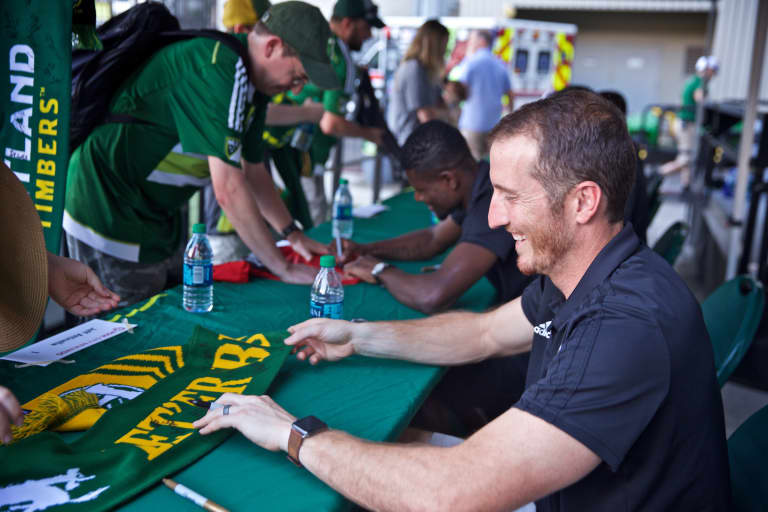
In search of an alternative, Attinella looked to his hometown team. The Rowdies were familiar with him, having seen the then-22-year-old mature in their backyard, so when it came time to find his career’s second stop, Attinella made the call.
“I knew the people at the Rowdies,” he says. “In college, I had trained with them, a lot. We scrimmaged them in college, too, and I had played really well. So, I knew that was a phone call I could make, where at the very least I could have gotten a trial, being a hometown guy, especially since the college is right down the street.
“I called them while I was in preseason with Salt Lake, when the writing was on the wall, and just got the wheels in motion. ‘It doesn’t look like it’s going to work out, here. I’m more than comfortable coming back to Tampa. My family’s there. My wife’s family’s there.’”
Looking back, Attinella knows he wasn’t wired for life away from home; not when he wasn’t competing for an MLS job. He was already dealing with the disappointment of being drafted too low, as well as the shock of realizing the competition at Real Salt Lake. He may have been an All-American in college, but at that, the first stage of his professional career, he needed to regroup.
“The way that I’m wired, if I would have had to move away from home to play in a lower league, I don’t think I would have enjoyed it as much … it would have been tough for me not being at the highest level to move away from home and do that grind without my family around, without people who I like and really care about around me.”
Attinella won the Rowdies’ No. 1 job for 2011 and had his contract picked up for the next season, when he was named a Best XI selection and helped lead his team to a league title.
“For me, that was the best thing that could have happened,” he remembers. “It got me games. It got me comfortable. It was a stepping stone up to MLS. It was a good thing to bridge that gap, and it got me the games at a professional level that I needed.”
3. Know when to move up
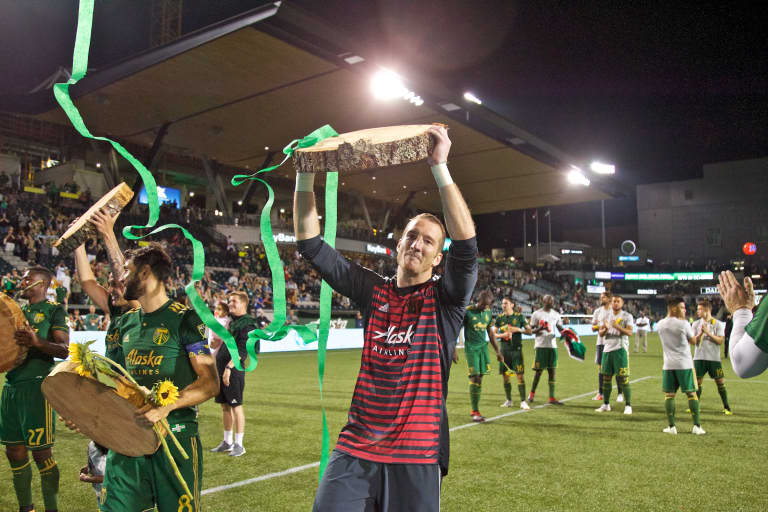
After 2012, it was clear Attinella was beyond the NASL. What wasn’t clear, though, was whether he had improved enough for MLS, and while it’s logical that the best goalkeeper in soccer’s second tier should, in theory, be ready to compete in the first division, Attinella’s previous experience at Salt Lake left room for doubt.
RSL wanted him back, though, and starting in 2013, Attinella would begin a four-season stint with his original MLS club. It would be over year, though, training in the shadow of Rimando, before he was confident that he could succeed at that higher level.
“Not until 2014,” Attinella says. “I got to Salt Lake in 2013, and I’m not saying this to suck up to him or anything – he’s a good friend of mine – but the stuff I was seeing Rimando doing, week-in and week-out, I felt like the gap was massive. Even that first preseason when I got there, they called me and said, ‘We love what you’re doing at the NASL, we’re going to bring you back as the No. 2,’ I didn’t even have any time. The first preseason camp, I didn’t do too great, and they signed Josh Saunders in a week.
“I thought, at the time, ‘It’s going to happen again, and I’ve only been here a week.’ But Josh picked up an injury, and I did the well the couple of games I went in.
“But I didn’t feel really ready to step in until after Nick got back from the (2014) World Cup. I got 10 games in. I was the guy for 10 games. It wasn’t spot-starting. It was my job, you know? I felt really comfortable, and after that, I felt like I could be a starter in this league.”
By that point, Attinella was 25 years old – still young for a goalkeeper, but well-removed from his time at South Florida. And while he was confident that, physically, he could meet the challenges of Major League Soccer, the opportunity was still lacking.
“After [the 2014 World Cup], my focus really turned to doing what I can do to be ready for my opportunities,” he explains, “but also doing the most I can to try and be a starter. I knew it wasn’t going to be in Salt Lake, so it was a lot of trying to get moved and trying to do what was best with my career.”
4. Seek what you deserve

Four seasons later, Rimando is still Real Salt Lake’s number one goalkeeper, and even though the 22-time U.S. international turned 39 in June, there’s no hint he’s about to give up his job. Had Attinella chose to wait him out, he’d still be walking a path with no apparent end – a path he knew, then, he had to step off.
“I always felt like playing behind Nick was one of the only jobs in the league that I couldn’t compete for,” he shared. “All you want as a player is a chance to compete for a starting job. In Salt Lake, I didn’t have it, but in Salt Lake I gained tremendous experience. I learned a ton from playing behind Nick, and it was another thing that was the best thing for me wrapped up in something that, at the time, felt really crappy.”
That’s a constant theme, for Attinella. The competition at Salt Lake in 2011? Terrible break; good experience, in the long run. Having to move back home; almost losing RSL’s No. 2 position when he returned; serving an apprenticeship behind Rimando – none of that was a No. 1 job in MLS. All of it, however, offered experience and perspective.
“When I got here,” to Portland, he remembers, having been acquired by the Timbers via trade with Minnesota United in December 2016, “the conversation was, you’re coming into compete. Jake [Gleeson] is obviously the guy. He’s the one. He’s been here a long time, and he did a really good job the year before. But I knew that you’ve got to keep plugging along, treat every day like you’re trying out for the starting job.
“That’s what I did, and fortunately for me, I got the opportunity to play toward the end of [2017] really consistently, and I felt that I did really well.”
Well enough that, come the postseason, he was the Timbers’ starting goalkeeper, having wrestled the job away from Gleeson. Over 14 appearances in his Rose City debut, Attinella made enough of an impression to, going into his first Portland offseason, feel like he had finally claimed the top of depth chart.
“Before Caleb [Porter] left, I knew I was the guy,” he says, about the team’s former coach. Porter ended his five-season stint in Portland at the end of the 2017 campaign. “That was a conversation that we had had, so going into the offseason, I was thinking great, I’m going to finally be able to enjoy an offseason without the stress of coming in and thinking that I’ve got to grind, the way that a backup does in those situations.
“And when left Caleb, it was anyone’s guess. Jake and I were competing. You’re hearing rumors about guys getting signed from overseas. Again, it was a total shift in my career. At the time, it was a bad thing wrapped in a blessing, because it got me re-motivated to come back and try to prove it again.”
With Giovanni Savarese’s arrival as head coach, every player had to reestablish their place on the depth chart. Hampered by injuries in preseason, Attinella’s fight to reclaim his job was prolonged, with Gleeson starting the first six games of the 2018 season.
Since, the job has been Attinella’s, who was in goal for 14 games of the Timbers’ record-tying 15-match unbeaten run. His 1.18 goals-against average is fourth best in MLS among goalkeepers who’ve made at least 15 starts, this season, while his 75.0 save percentage ranks second in the league among similarly-qualified players.
“I felt like I was a number one, here,” he said, “and the way that this season’s worked out, I think I’ve done a good job of locking it up. So, it’s been good.”
5. Don’t settle for just starter
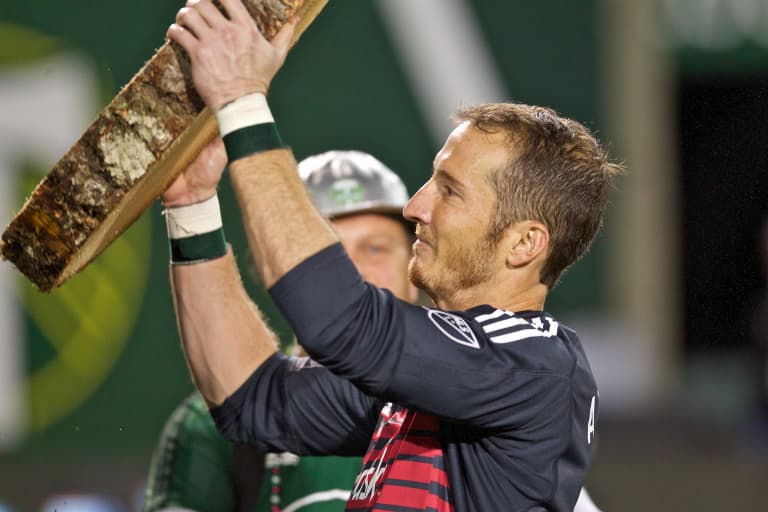
Going into the final months of the 2018 season, there’s little doubt who is Portland’s number one goalkeeper. Now, the conversation around Jeff Attinella has changed. Is he a starting-caliber goalkeeper? Few are asking that, anymore. Now, the question is where he ranks among his MLS peers.
“That’s been a weird transition, because for a long time, I had the label of really good backup,” he explains. “And when you’re a backup, that’s good to hear. But when it sticks with you, it’s a hard stigma to shake. People just view you as a reliable guy that could get the job done, but there are guys that are a lot better.
“This year, I’m really trying to establish myself as someone that, week-in and week-out, you can rely on. For me, the most important thing is that when I’m playing, I really want the team to be winning. I really want to the team to be getting results. That’s a good indication of what I’m all about.”
The Timbers have only lost four games since Attinella reclaimed the starting job – one in U.S. Open Cup play, in addition to the team’s current three-game run. In the 17 league games Attinella’s started, Portland is 9-3-5, conceding only 20 goals. Their 1.88 points-per-game rate, applied to the whole season, would tie FC Dallas for the Western Conference’s best mark.
“Even though I might not be the flashiest guy who is making the highlight saves and getting a lot of the national attention,” he says, “I still think that I have been doing a good job. At least this year, I feel like I belong in the conversation with the guys who have been getting the recognition. That’s not me having a big ego. That’s me putting the work in and feeling like the results have spoken for themselves.”
It’s work that started in South Florida, went to Salt Lake City and back, and eventually, via Minnesota, found its way to Portland. Is it work that deserves recognition among the best goalkeepers in Major League Soccer? By the numbers, yes, but individuals’ eye tests may vary.
What’s clear, though, is that the conversation has moved beyond whether Attinella can start at the country’s highest level. Writing his own guide along the way, Attinella has firmly established himself as an MLS No. 1.

